Disclosure: This article contains affiliate links. We may earn a commission from purchases at no extra cost to you, which helps our travel content.
G'day adventure seekers! If you've landed here, you're probably itching to experience the magic of Machu Picchu but keen to dodge the conga line of tourists on the classic Inca Trail. After my third visit to Peru (yes, I'm properly obsessed), I've learned that this ancient wonder offers so much more than that one famous path. During my winter expedition last year, I discovered alternative routes that deliver heart-racing adventure, jaw-dropping vistas, and genuine cultural connections that the traditional trail simply can't match. Whether you're traveling with your best mates, adventure-loving family, or a group of newfound friends, these lesser-known paths will give you bragging rights and memories that the standard postcard experience never could. Grab your hiking boots and let's explore the roads less traveled to the lost city of the Incas!
The Salkantay Trek: Where Glaciers Meet Jungle
If you ask me about the most dramatic landscape transitions I've ever experienced, Salkantay takes the cake, hands down. This 74km journey starts in the crisp Andean highlands and gradually descends into steamy cloud forest – it's like experiencing all four seasons in a single trek.
Day two nearly broke me, I won't lie. The 4,630m Salkantay Pass had me huffing and puffing like I'd never seen a gym in my life. But standing beneath the towering Salkantay glacier with its ice peaks piercing a perfect blue sky? Worth every labored breath. Our guide Mateo shared ancient Quechua legends about the mountain being a wild, untamable deity – and looking up at that massive wall of ice and rock, I believed every word.
Unlike the Inca Trail, Salkantay doesn't require booking months in advance (though I'd still recommend it in peak seasons). You'll need proper gear though, especially for those frigid mountain nights. My down sleeping bag was an absolute lifesaver when temperatures plummeted below freezing at our highest camp.
The trail's diversity is what makes it magical – one moment you're crossing high alpine terrain, the next you're spotting orchids and hummingbirds in lush forest. And the coffee plantations near the end? Heaven for caffeine fiends like myself. We even helped harvest beans at a family farm before sampling their divine brew.
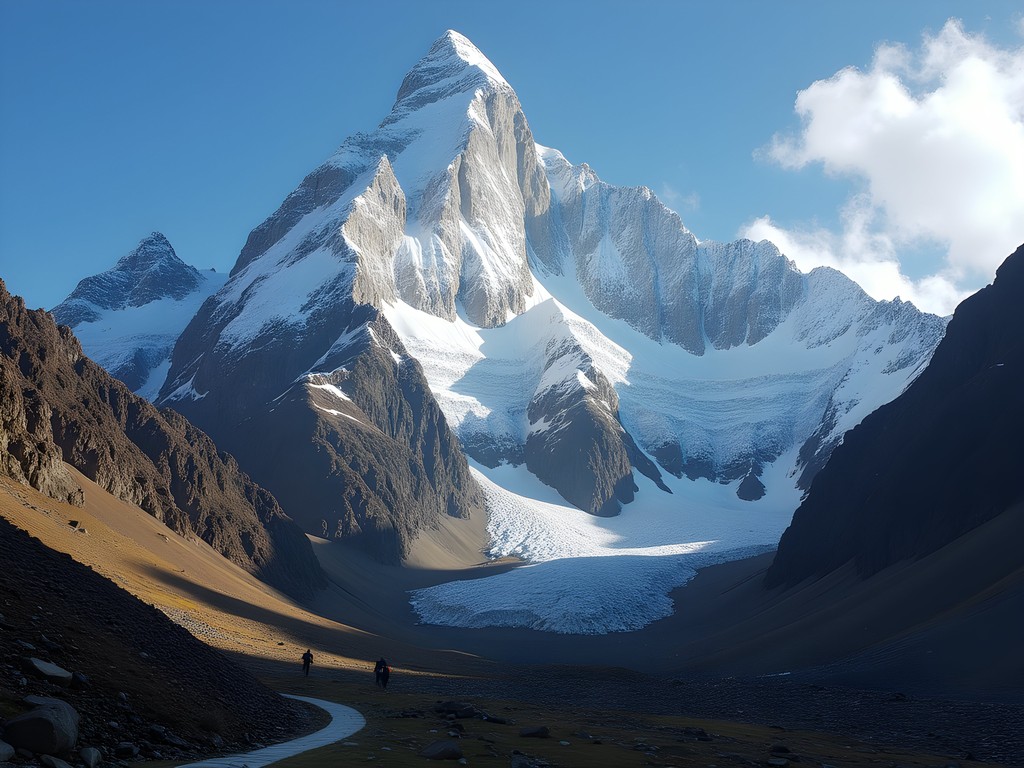
💡 Pro Tips
- Book with a responsible operator that provides proper equipment and pays porters fairly
- Acclimate in Cusco for at least 2-3 days before attempting this high-altitude trek
- Pack layers! Temperatures range from below freezing to tropical heat
The Lares Trek: Cultural Immersion with Hot Springs Rewards
While most routes to Machu Picchu focus primarily on ruins and landscapes, the Lares Trek delivers something equally valuable – genuine cultural connection. This path winds through remote Andean communities where life continues much as it has for centuries.
During our winter trek last July (remember, that's dry season in Peru!), we hiked through valleys dotted with stone houses where local women in vibrant traditional dress worked ancient looms in doorways. Children with rosy cheeks from the mountain air raced alongside us, giggling and practicing their few English phrases. My heart absolutely melted.
The physical challenge here isn't as intense as Salkantay, but don't be fooled – you'll still tackle passes over 4,400m with thin air that makes your lungs burn. The difference? After a challenging day, you're rewarded with natural hot springs that soothe every aching muscle. Soaking under star-filled skies while sharing coca tea with our porters remains one of my favorite Peru memories.
A real highlight was visiting a local school where we delivered supplies (check with your tour operator about this opportunity). The gratitude from students and teachers was overwhelming, and suddenly those extra colored pencils in my pack felt like the most important things I'd packed.
For capturing these authentic cultural moments, I relied heavily on my mirrorless camera. Its silent shooting mode allowed me to capture candid moments without disrupting the beautiful everyday life unfolding around us.

💡 Pro Tips
- Learn basic Quechua phrases – the locals' faces light up when you try their language
- Bring small gifts like school supplies or fruit for communities you'll visit (ask your guide what's appropriate)
- Pack a swimsuit for those heavenly hot springs!
The Choquequirao Trek: Indiana Jones Vibes Guaranteed
If you're after serious bragging rights and ruins that rival Machu Picchu itself (with about 0.1% of the visitors), the Choquequirao trek is your holy grail. Fair warning: this is the most challenging route I'm recommending, but mates, the payoff is EPIC.
Choquequirao means 'Cradle of Gold' in Quechua, and this massive archaeological complex remains about 70% unexcavated, still embraced by jungle. When our small group of six arrived after the brutal climb, we had the entire site to ourselves. Let that sink in – an ancient Inca city all to yourself. I literally sat on a stone terrace watching the afternoon light play across ruins while condors soared overhead. Pure magic.
The trek itself is a beast – 64km round trip with extreme elevation changes. You'll descend 1,500m into the Apurimac Canyon only to climb right back up the other side. My trekking poles were absolute lifesavers for my knees on those punishing descents and quad-burning climbs.
What makes this route special beyond the ruins? The isolation. We camped under stars brighter than I've seen anywhere else on earth, bathed in pristine streams, and spotted wildlife that included foxes and the elusive spectacled bear (Paddington's Peruvian cousin!).
After exploring Choquequirao, you have options – return the way you came or continue on the 9-day through-trek to Machu Picchu. We chose the latter, and though there were moments I questioned my sanity while climbing yet another steep pass, connecting these two lost cities on foot was worth every blister.

💡 Pro Tips
- Train specifically for descents and climbs – this trek punishes unprepared knees and quads
- Pack light but bring proper camping gear – there are no luxury lodges here
- Consider hiring a mule for your heavy gear (supports local communities and saves your back)
The Inca Jungle Trek: Multi-Sport Madness
Calling all adrenaline junkies! If the thought of just hiking for days makes you yawn, the Inca Jungle Trek combines mountain biking, ziplining, rafting, and hiking into one action-packed adventure. This was my first-ever route to Machu Picchu years ago, and it set the bar ridiculously high.
Day one kicks off with a 50km downhill mountain bike descent from 4,350m into the jungle. You'll drop nearly 3,000 meters in elevation while the landscape transforms dramatically around you. The road has hairpin turns that had me white-knuckling my handlebars while simultaneously whooping with joy. My action camera captured the entire heart-racing descent – footage that still gives me goosebumps.
The trek portion winds through coffee plantations and alongside rushing rivers before you reach Santa Teresa, home to natural hot springs that are perfect for soothing muscles. The optional zipline experience there sends you flying over the jungle canopy on Peru's longest lines – an absolute must for thrill-seekers.
What makes this route special is the climate shift. After freezing in Cusco, you'll suddenly find yourself in humid jungle, spotting orchids, butterflies, and if you're lucky, monkeys. Our guide Carlos pointed out medicinal plants used by local communities that I would have walked right past.
The final day's hike to Aguas Calientes follows the train tracks and river valley – less historically significant than other routes but beautiful in its own right. The first glimpse of Machu Picchu from the Sun Gate hits differently when you've arrived via this adventure cocktail of activities.

💡 Pro Tips
- Check the mountain bikes carefully before descending – safety first!
- Pack quick-dry clothes as you'll get wet during rafting and likely sweat through everything else in the humidity
- Consider bringing reef-safe insect repellent as mosquitoes in the jungle section are no joke
The Vilcabamba Traverse: The Ultimate Explorer's Route
If you're after the road seriously less traveled, the Vilcabamba Traverse is the holy grail of alternative Machu Picchu routes. This challenging 5-7 day expedition follows the actual final escape route of the Incas as they fled Spanish conquistadors.
I won't sugarcoat it – this trek is remote, demanding, and requires an experienced guide. We went with a specialized outfit that employs local guides with deep knowledge of this historical path. You'll cross multiple high passes above 4,000m while exploring rarely-visited ruins like Vitcos and the sacred white rock of Yurak Rumi.
What struck me most was the profound silence. Days would pass where we saw no other hikers – just local farmers tending fields using methods unchanged for centuries. One evening, our guide Fernando arranged for us to participate in a traditional pachamanca feast, where food is cooked underground using hot stones. Sharing this meal with our porters while they told stories of Incan spirits said to still wander these mountains gave me proper goosebumps.
The biodiversity here is staggering – we traversed ecosystems ranging from puna grasslands to cloud forests dripping with moss and orchids. Birdwatchers, bring your compact binoculars – we spotted Andean condors, caracaras, and dozens of hummingbird species I'd never seen before.
The final approach to Machu Picchu comes from an angle few ever witness, with views that had me frantically snapping photos while simultaneously wanting to just put the camera down and burn the panorama into my memory forever. When we finally reached the Sun Gate, the main tourist crowds seemed a world away from our wilderness experience.
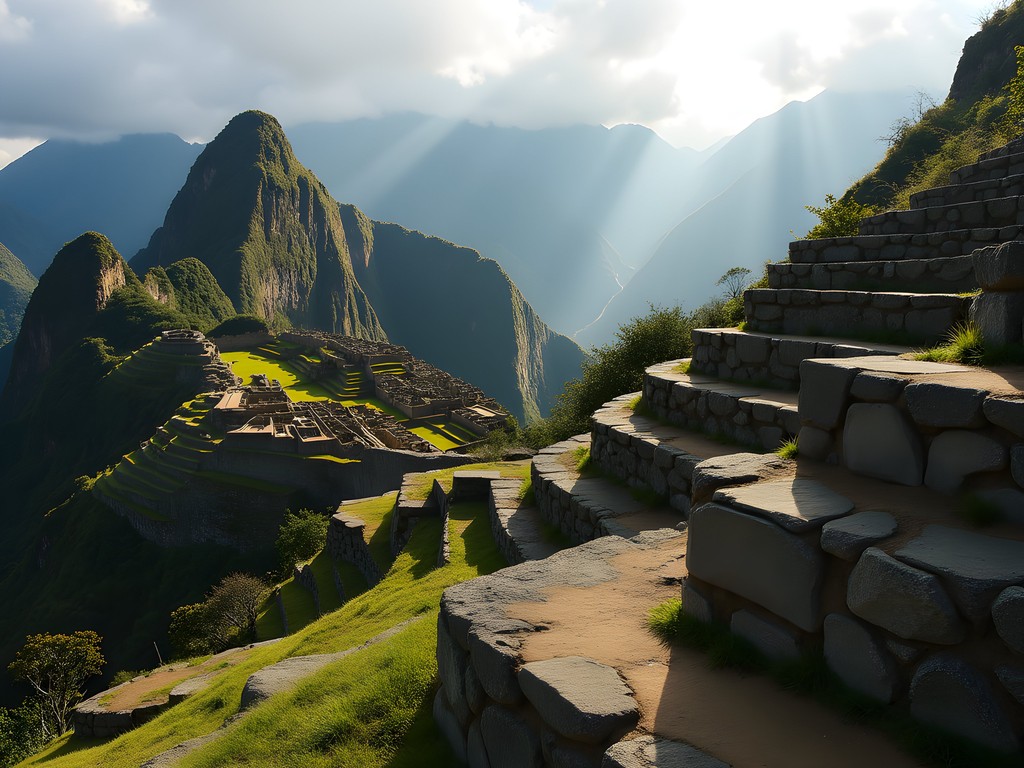
💡 Pro Tips
- Only attempt this with experienced guides who know the route intimately
- Pack a comprehensive first-aid kit – you'll be far from medical facilities
- Research the Incan history before going to fully appreciate the historical significance of sites along the way
Final Thoughts
While the classic Inca Trail certainly deserves its fame, these alternative paths to Machu Picchu offer experiences that are equally magical but distinctly different. Whether you're after cultural immersion on the Lares Trek, adrenaline rushes on the Inca Jungle route, or profound solitude on the Vilcabamba Traverse, Peru rewards those willing to step off the beaten path. The journey truly becomes as meaningful as the destination itself.
Remember that whichever route you choose, respecting the land, culture, and communities you encounter along the way ensures these special paths remain pristine for future adventurers. Now, which of these adventures will you choose for your Machu Picchu pilgrimage? The ancient stones await, but the stories you'll collect along the way? Those are the real treasures you'll bring home. Catch you on the trails!
✨ Key Takeaways
- Book alternative treks 3-6 months in advance for peak seasons (May-September)
- Spend at least 2-3 days acclimatizing in Cusco before any high-altitude trek
- Consider your fitness level and adventure preferences when choosing your route
- Pack for multiple climate zones – you'll experience everything from freezing nights to tropical heat
- Choose responsible tour operators that practice sustainable tourism and fair treatment of porters
📋 Practical Information
Best Time to Visit
May to September (dry season), with June-August being peak months
Budget Estimate
$800-1500 USD for guided treks (varies by route, group size, and inclusions)
Recommended Duration
10-14 days (including acclimatization in Cusco)
Difficulty Level
Moderate To Challenging (Route Dependent)
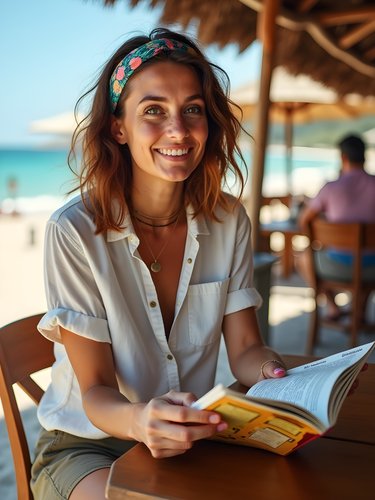
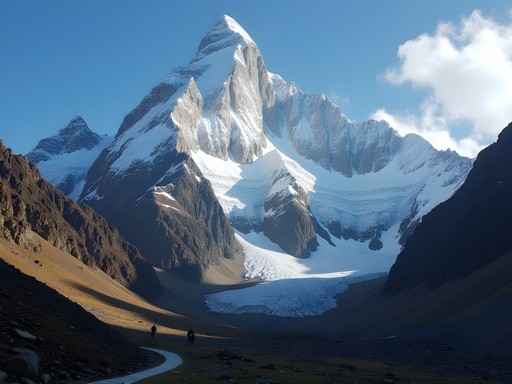



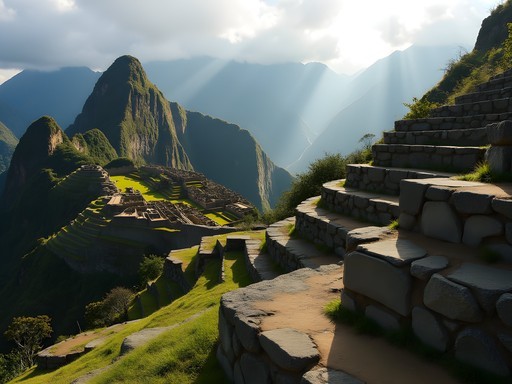


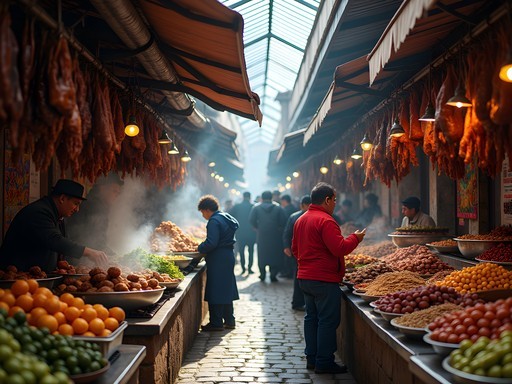







Comments
beachbackpacker7485
Thanks for this post! Just booked the Inca Jungle Trek for December - the mountain biking part sold me!
Douglas Bradley
Excellent overview, Francesca! I'd add that the Inca Jungle Trek is ideal for those seeking variety beyond just hiking. The mountain biking descent is exhilarating (and slightly terrifying), dropping nearly 2000m in elevation. One often overlooked aspect of these alternative routes is their ecological significance - they cross through multiple biodiversity zones that the classic Inca Trail doesn't touch. The Salkantay in particular takes you through cloud forests that host endemic orchid species found nowhere else. These routes also distribute tourism dollars to communities that don't benefit from the main tourist thoroughfare. If anyone's concerned about the physical demands, the Lares is your best bet - more gradual ascents and those hot springs are heaven for sore muscles.
escapechamp
Has anyone done the Choquequirao Trek? Worth the extra days?
Douglas Bradley
Absolutely worth it if you have the time. Choquequirao itself is only about 30-40% excavated, giving it this raw, discovered-yesterday feeling. We saw a total of 8 other hikers during our entire time there. It's physically demanding though - the elevation changes are brutal. Plan for 7-9 days if you want to do the full route to Machu Picchu.
photostar
The Lares Trek was perfect for photography! Way fewer people than the Inca Trail means unobstructed shots of those mountain passes. Bring extra batteries though - the cold at higher elevations drains them super fast. I filled my 64GB card in just 3 days. The locals in traditional dress were incredibly photogenic, but always ask permission first and consider leaving a small tip. My favorite shots came from the hot springs - that steam against the mountain backdrop at sunrise was magical!
Douglas Bradley
Absolutely right about the batteries. I'd add that a lightweight tripod is essential for those low-light conditions in the cloud forests. The biodiversity transition zones create fascinating micro-lighting conditions that are challenging to capture handheld.
photostar
Good call on the tripod! I used my travel tripod which was perfect since it's compact enough to strap to my backpack.
dreamguide
Just got back from the Salkantay Trek last month and it was MIND-BLOWING! The glacier-to-jungle transition is exactly as Francesca described - one day you're bundled up against the cold, the next you're swatting mosquitoes in a t-shirt. Our guide told us only about 20% of Machu Picchu visitors take this route. The highest point (Salkantay Pass at 4,630m) nearly killed me but the views were worth every labored breath. Pro tip: spend an extra day in Cusco acclimatizing before you start. My friend rushed it and spent the first two days with altitude sickness.
escapechamp
Did you camp or stay in the lodges? Trying to decide which way to go!
dreamguide
We camped! More authentic experience IMO, but the Mountain Lodges of Peru option looked pretty sweet when we passed by. Depends if you want comfort or the full experience!
sunsetrider9526
Just got back from doing the Choquequirao Trek last month and it was INTENSE but incredible! Francesca wasn't kidding about those Indiana Jones vibes. We only saw 8 other hikers during 4 days, compared to hundreds on the Inca Trail. The ruins are massive and you can explore freely without crowds. Fair warning though - the trail is brutal with constant steep ups and downs. My trekking poles saved my knees on those descents. If you're considering this route, train hard and don't underestimate the 3000m elevation changes. Best time is May-September when it's drier. Our guide said they're planning a cable car to Choquequirao in the future, so go now before it gets commercialized!
backpackvibes
Heading to Peru in October and can't decide between these options! Which one would you recommend for someone with decent fitness but zero high-altitude experience? Also, do I need to book these treks months in advance like the Inca Trail?
nomadguy
For first-time high altitude, maybe try Lares - it's shorter and has those hot springs to recover in! And nope, you can book most alternative treks just a few days before in Cusco, unlike the classic trail.
backpackvibes
That's super helpful, thanks! Lares it is!
beachbackpacker7485
Great post! Has anyone here done the Lares Trek? Wondering if the hot springs are actually worth it or just a tourist trap?
Taylor Moreau
The Lares hot springs are genuinely therapeutic after days of hiking. I've completed this trek twice while researching for my business clients, and I can confirm they're natural thermal pools, not artificial tourist traps. The real value of Lares, however, is the cultural immersion - you'll pass through authentic Quechua villages rarely visited by mainstream tourism. I highly recommend bringing small gifts for the local children (school supplies are appropriate) as a gesture of appreciation when photographing the communities.
nomadguy
Did the Salkantay last year - absolute game changer! Those glacier views beat the classic trail any day.
sunsetrider9526
How tough was it physically? Considering it for next spring but worried about the altitude.
nomadguy
Definitely challenging! Day 2 over the pass (4600m) is brutal but doable if you acclimatize in Cusco for 2-3 days first. Worth every gasp for air though!
summerguy
Just booked the Salkantay for May! This article convinced me to skip the regular trail. Thanks Francesca!
Venture X
Premium card with 2X miles, $300 travel credit, Priority Pass